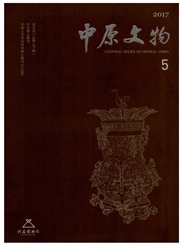

 中文摘要:
中文摘要:
根据文献记载,荒帷是周代贵族墓中用作棺饰的一种丝织品:然而,因难以保存,一直缺少考古发掘的实物证据。2004年在西周佣国墓地发掘时,发现了板结在土层表面的荒帷印痕,为了解古代荒帷提供了重要的材料。我们采用显微观察测量、扫描电镜(SEM—EDS)、X射线衍射(XRD)、拉曼光谱以及淀粉粒刚果红染色法等方法和技术,对荒帷印痕和土样进行了系统的测试和分析.结果表明,荒帷为平纹组织,经纬密度大约为38×24根/平方厘米。所用红色颜料为朱砂(HgS),黄色颜料推测为黄赭石。石染法所使用的胶结物应为淀粉类黏合剂,说明汉代郑玄对《考工记》中“钟氏染羽”的解释确有所指。纺织品残留印痕的科技分析可以获取丰富的潜信息,在今后的研究中应给予足够的重视。
 英文摘要:
英文摘要:
According to literature record, Huangwei is a type of wrought silk to cover coffins and mainly used by senior nobility in Zhou dynasty ( China, B. C. 1046 - B. C. 221 ) As organic material, Huangwei is hard to preserve underground until today, so many information of it are not clear. Until 2004, the Graveyard of Peng Nation in Western Zhou dynasty ( B. C. 1046 - B. C. 771 ) , where located in Jiang county, Shanxi province, excavated the Huangwei which were impressed on the soil. The impressed mark provided a good chance to understand ancient Huangwei. For the impressed mark on the soil, Optical microscope SEM - EDS, XRD, Raman and Congo- red staining method were used to extract related information. The results show that the textile is tabby fabric with warp and weft densities about 38 × 24cm^2 , the red pigment was cinnabar, and the yellow pigment perhaps is yellow ochre. And it also indicated that cooked starch was binding material between silk and cinnabar, and this agreed to literature record. This work shows that analysis of the textile marks will reveal considerable details, and it deserves to get enough emphasis.
 同期刊论文项目
同期刊论文项目
 同项目期刊论文
同项目期刊论文
 期刊信息
期刊信息
